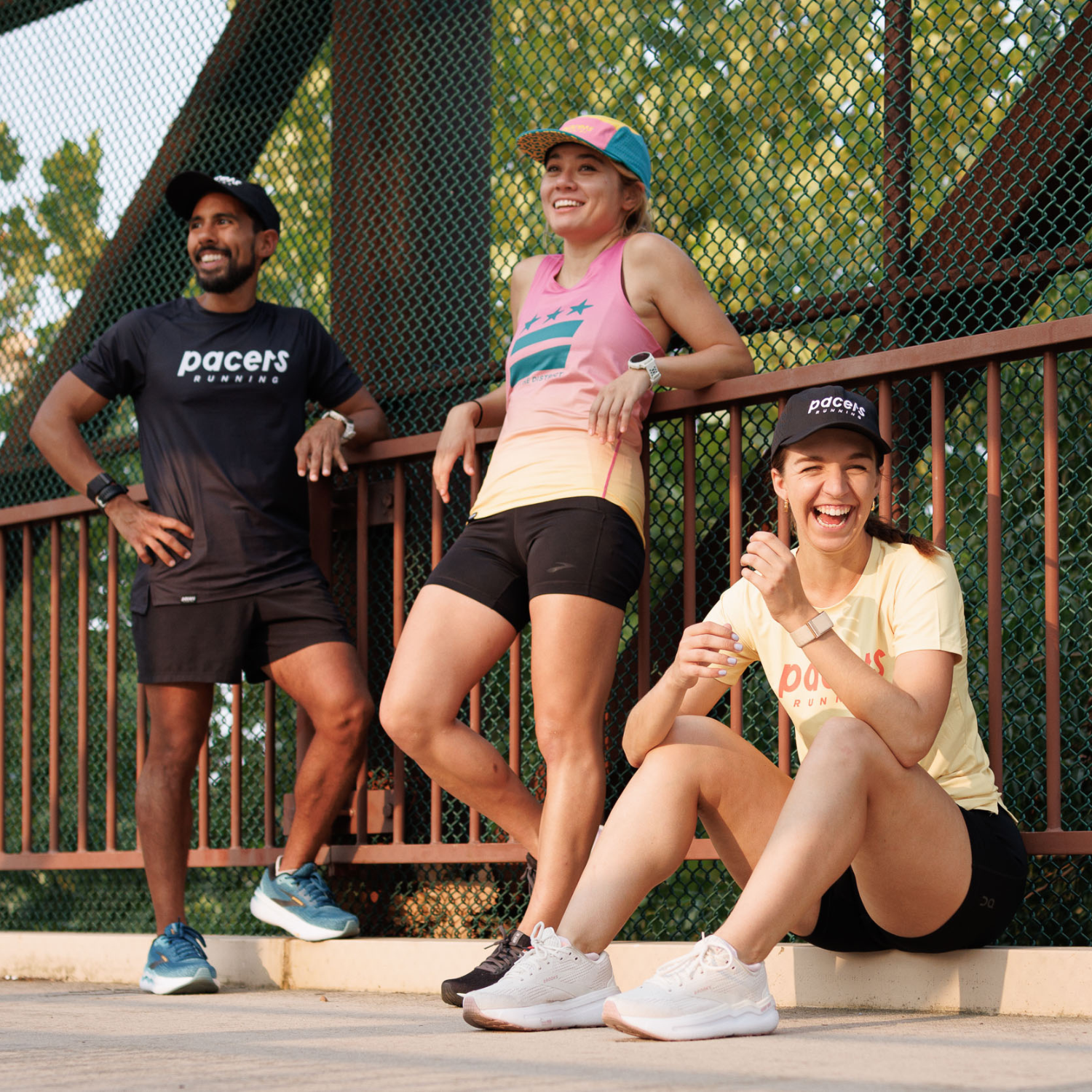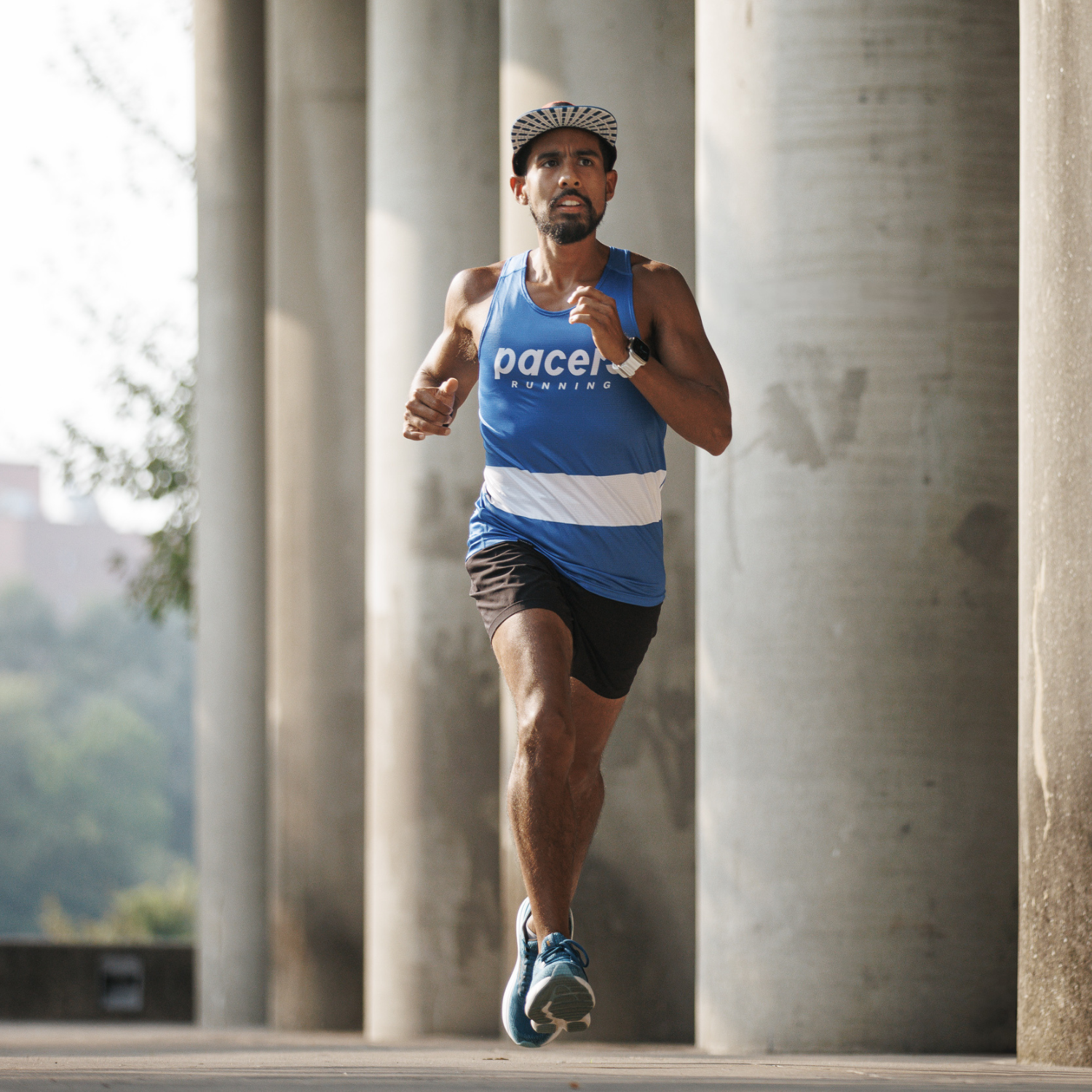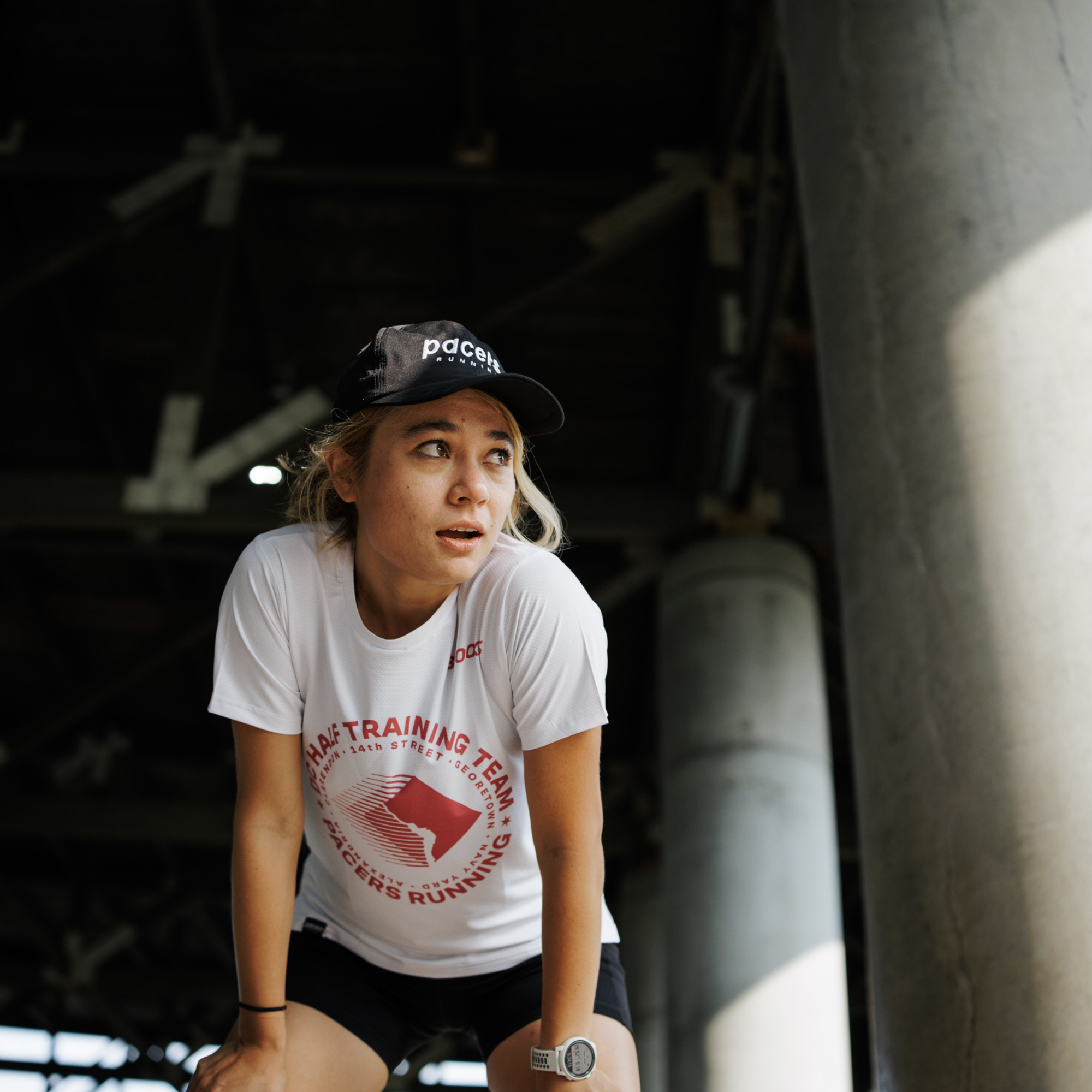Timothy Eckert from MedStar Health shares his recommended pre-run warm-up exercises and post-run cooldown stretches, and also offers his advice for warming up for trail runs and also when it's appropriate to stretch during your run.
A special thanks to Timothy Eckert and the MedStar Health Physical Therapy team for providing the content for this article, and the Navy Yard Pacers team for creating the videos!
Dynamic stretching is a crucial component of any effective pre-run warm-up.
Unlike static stretching, where you hold a position for an extended period, dynamic stretching involves moving your muscles and joints through a range of motion, helping to increase blood flow, warm up the body, and prepare it for the demands of running.
This not only enhances your performance but also reduces the risk of injury by promoting better muscle flexibility and joint mobility.
Research has shown that dynamic warm ups are more effective than static stretching in preventing injuries and improving performance.
In this article, we'll cover the most important pre-run warm-up exercises, static cool-down stretches to complete after your run, specific stretches to perform before trail runs, and advice on stretching during runs.
Jump to post-run static cool-down stretches
Jump to recommended pre-trail-run stretches
Jump to mid-run stretching advice
Pre-Run Warm-Up: Dynamic Stretches
A sample dynamic warm-up routine before going for a run might include the following:
-
Leg Swings: Stand near a support and swing one leg forward and backward like a pendulum. Perform 10-15 swings on each leg to loosen up your hip flexors, hamstrings, and quadriceps.
-
Arm Circles: Extend your arms straight out to the sides and make small circular motions with your arms. Gradually increase the size of the circles. Do this for 30 seconds in each direction to warm up your shoulders and upper body.
-
High Knees: While jogging in place, lift your knees as high as possible with each step. Do this for 20-30 seconds to engage your hip flexors and improve your running form.
-
Butt Kicks: Continue jogging in place but focus on kicking your heels up towards your glutes with each step. This dynamic exercise warms up your hamstrings and calf muscles and helps increase your stride length.
-
Frankenstein Walk: Take slow, deliberate steps, extending one leg straight in front of you while reaching out with the opposite hand to touch your toes. Alternate legs and perform 10-15 reps on each side to stretch your hamstrings and improve balance.
-
Ankle Circles: While standing, lift one foot slightly off the ground and make circles with your toes. Perform 10-15 circles in each direction to warm up your ankle joints.
-
Walking Lunges: Take a step forward with your right leg, bending both knees to create a lunge position. Push off with your right foot and step forward with your left leg into the next lunge. Continue alternating legs for about 10-15 lunges on each leg. Walking lunges help stretch and strengthen the quadriceps and glutes.
Here's a link to the playlist containing the above dynamic warm-up stretches on Youtube:
https://www.youtube.com/playlist?list=PLVx3AQKvZ0bidG5kqhGdCReuK898wwLED
Post-run cooldown: Static stretches
Static stretching after a run is essential to help your body cool down, improve flexibility, and reduce the risk of muscle tightness and injury. After intense physical activity like running, your muscles may be contracted and in need of relaxation.
Static stretching allows you to gently lengthen and relax these muscles, promoting recovery and preventing post-run soreness.
Here's a sample static stretching routine to consider after a run:
-
Quadriceps Stretch: Stand on one leg and grab your ankle behind you with your hand. Pull your heel towards your glutes while keeping your knees close together. Hold for 30 seconds on each leg.
-
Hamstring Stretch: Sit on the ground with one leg straight and the other leg bent so the sole of your foot is against your inner thigh. Reach forward toward your toes while keeping your back straight. Hold for 30 seconds on each leg.
-
Calf Stretch: Stand facing a wall with one foot forward and the other foot back. Keep your back leg straight and your heel on the ground while bending your front knee. Lean into the wall to feel the stretch in your calf. Hold for 30 seconds on each leg.
-
Hip Flexor Stretch: Kneel on one knee with the other foot in front, forming a 90-degree angle with your knee. Lean forward slightly to feel a stretch in the front of your hip. Hold for 30 seconds on each side.
-
Groin Stretch: Sit on the ground with the soles of your feet together and your knees bent outward. Gently push your knees towards the ground while keeping your back straight. Hold for 30 seconds.
Remember to breathe deeply and relax into each stretch. Hold each stretch for at least 30 seconds to allow your muscles to fully relax and lengthen. Static stretching after a run can contribute to improved flexibility, reduced muscle soreness, and a more effective recovery process.
Here's a link to our static stretches playlist on Youtube:
https://www.youtube.com/playlist?list=PLVx3AQKvZ0bgf5P269H6Doo2CaaLFxszb
Trail run warm-up: Combine static & dynamic stretches
Stretching before and after a trail run can help to improve performance of and assist in injury prevention. Due to the unique demands of trail running, a dynamic warm up (see above) should be prioritized prior to participation in running on uneven terrain. This can be supplemented by the following stretching routine:
When preparing for a trail run, it's also important to incorporate specific stretches that target the muscles and joints commonly engaged in uneven terrain and steep inclines. Special attention should be placed to on addressing tightness in the calf.
Here are some of the best stretches for someone going on a trail run.
-
Ankle Circles: Trail running often involves navigating uneven surfaces, which can put stress on your ankles. Sit or stand and make circles with your ankles in both directions to improve ankle mobility and flexibility.
-
Calf Stretch: Lean against a wall or tree with one foot forward and one foot back. Keep the back leg straight and bend the front knee, leaning into the wall or tree to feel a stretch in the calf. Switch legs.
-
Achilles Tendon Stretch: Similar to the calf stretch, but with a slightly bent back knee to target the Achilles tendon. Keep your heel on the ground and feel the stretch in your Achilles. Switch legs.
-
Hip Flexor Stretch: Due to the varied terrain of trails, hip flexors can become tight. Perform a kneeling hip flexor stretch by kneeling on one knee and lunging forward, feeling the stretch in the front of your hip. Switch legs.
-
Quad Stretch: Stand or hold onto a support, grab your ankle behind you, and gently pull your heel towards your glutes while keeping your knees close together. Hold for a few seconds on each leg.
-
Groin Stretch: Sit on the ground with the soles of your feet together and your knees bent outward. Gently push your knees toward the ground to stretch your groin muscles.
Here's a link to our pre-trail-run stretches playlist on Youtube:
https://www.youtube.com/playlist?list=PLVx3AQKvZ0biYT8na_HdyVxMy99KnpZ61
Stretching during runs
Lastly, stretching during a run does have a time and place. If an athlete is beginning to experience tightness in a particular muscle group, stopping for a brief period and stretching can prevent a cramp or strain in the affected muscle.
However, discomfort in a muscle group during a run could be your body sounding an “alarm” and could be a sign of an issue such as a breakdown in form, overuse, or nutritional deficits. It is important to listen to your body and ensure you are not pushing through a potential injury.
If you think you've had an injury
If you've experienced a sporting injury, stop exercising immediately. The last thing you want to do is make your injury worse.
If you need help finding a reputable physical therapist in the Baltimore or DC area, we encourage you to visit one of MedStar Health's 50 Physical Therapy locations in the area. They're top-notch and will help you get back to your routine as quickly and as safely as possible.









